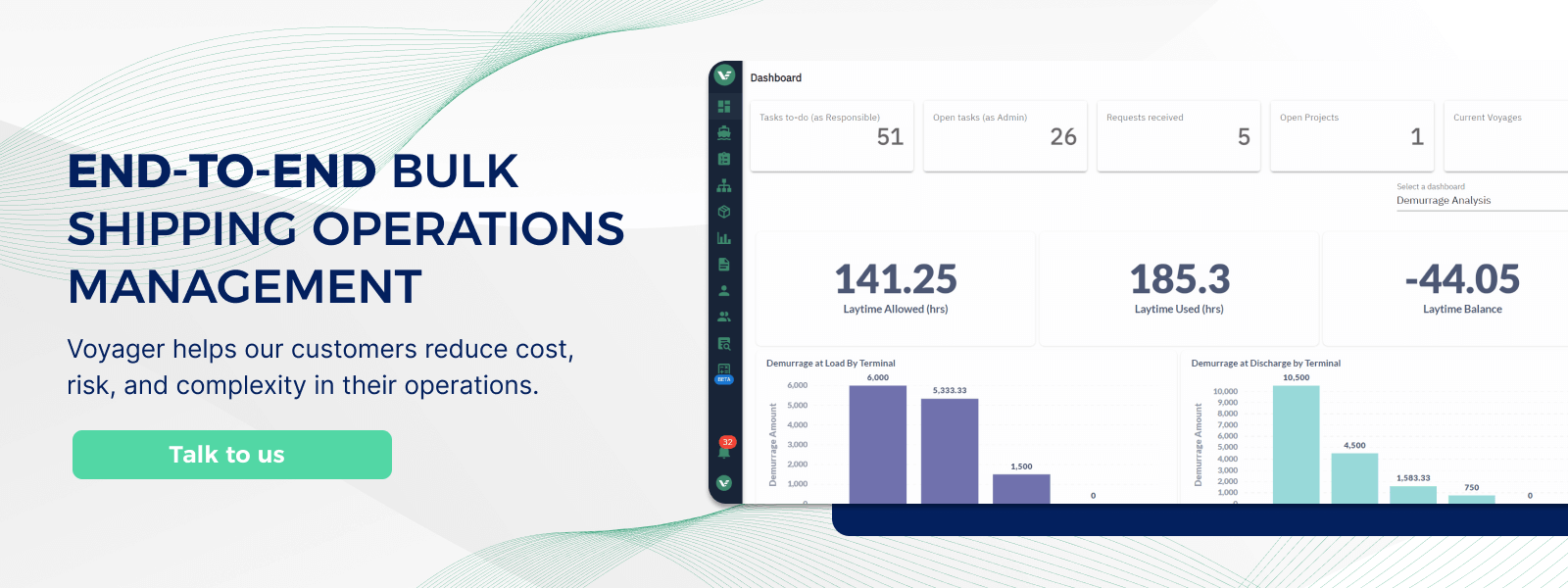The shipping industry is undergoing a digital transformation, as technologies emerge daily, providing an opportunity to improve operations, reduce costs, and increase safety. And Low-Code platforms can play a crucial role in this transition, given the industry complexity and need for customization.
According to Gartner, low-code development technologies are expected to grow 20% in 2023, reaching a market value of $26.9 billion. The key drivers will be a combination of a rising number of non-IT personas and of enterprise-wide automation, as is predicted that by 2026, individual contributors outside IT departments will account for at least 80% of the user base for Low-Code development tools, up from 60% in 2021.
“Organizations are increasingly turning to Low-Code development technologies to fulfill growing demands for speed application delivery and highly customized automation workflows. Equipping both professional IT developers and non-IT personas with various Low-Code tools enables organizations to reach the level of digital competency and speed of delivery required for the modern agile environment.
Varsha Mehta, Senior Market Research Specialist Gartner
The reality is that digital technologies and tools are transforming the role of vessels from being just transport mechanisms to enablers of value creation. In this path, automation and flexibility will be essential to help maritime leaders minimize the impact of external influences on their businesses.

What is Low-Code?
Low-Code technology allows people to create and deploy applications using visual models instead of writing code. It provides a drag-and-drop interface and often pre-built templates, making it easier for non-technical people to build these applications.
The goal of low-code is to speed up the development process and make it more accessible to a broader range of users, without sacrificing the power of traditional software development methods. With low-code, organizations can quickly build and customize applications that meet their specific needs, without relying on extensive programming knowledge or a large development team.
Low-Code is precisely fit for businesses that need to streamline and automate processes, but often are highly complex and lack the resources or technical expertise to build custom applications from scratch.
In this sense, low-code platforms cater to a wide range of users, especially in the maritime industry: operations, logistics, and management departments become empowered to streamline processes, automate repetitive tasks, and manage data more effectively.

The Issue With Spreadsheets
The maritime industry has long struggled with process & technology management. Most companies handle two types of scenarios – a part of their operations supported by ERP applications and satellite processes managed through spreadsheets.
Spreadsheets are usually easy opportunities for solving problems, but they can be extremely unstable and don’t guarantee high-quality collaborative environments. While may be a quick solution for smaller operations, they start to become risky as the operation grows and are highly prone to errors due to manual inputs.
Also, handling multiple spreadsheets makes it challenging to manage version control and collaborate with external stakeholders, resulting in a lack of visibility, control, and efficiency in maritime operations.
However, the reality is that it is impossible to involve the IT department in every process and make them automate everything – priorities are numerous, there’s simply not enough budget, or they might not have the specific knowledge or the time to learn it. That’s why spreadsheets proliferate, and often optimizing efficiency goes down the list of issues. And that’s where low-code technology comes into play.

Low-Code and the Maritime Industry
The shipping industry requires flexible technology to accommodate different companies’ unique scenarios. However, this flexibility must be balanced with organizational control and quality assurance.
Low-Code technology provides this balance by centralizing processes in a single source of truth, which is easy and quick to implement and can be shared company-wide. Users can create collaboration tools to seamlessly collaborate with internal and external stakeholders, ensuring everyone has access to the same information.
Logistics operators can use low-code to build custom tools that help them manage complex supply chains and respond to changing market conditions in real-time. At the same time, maritime leaders can use low-code to develop applications that provide a centralized source of truth, facilitating collaboration and enabling decision-making based on real-time data.
This empowers employees across maritime organizations to work more efficiently, helping organizations stay competitive in an increasingly complex and rapidly evolving marketplace.

The Benefits of Low-Code Technology
Low-code has several benefits. The most notable ones, considering the maritime industry, are:
- Speed of change
With the rapid pace of technological advancements, companies in the maritime industry are under constant pressure to keep up. Low-code platforms provide the ability to quickly adapt to market dynamics without the need for extensive technical skills. This allows businesses to respond to new demands with agility while maintaining their necessary customization levels.
Imagine your company starts shipping a new commodity with a unique set of inspection and handling requirements or suddenly needs to deal with different routes or time schedules. Low-Code empowers your team to quickly adapt to these dynamic events without relying on IT every time.
- Reliable Data Audit
One of the main challenges of manual data handling is the lack of a clear record of who did what and when. Low-code platforms offer a central repository for all data and information, providing a clear audit trail of all changes and updates. This not only helps in maintaining data accuracy but also allows for greater transparency, as all stakeholders have access to the same information in real time.
When managing multiple voyages, keeping track of different document versions and edits is risky, as human mistakes can easily become financial damages. Having a central repository for all claims and policy data enables operators to track and approve changes while maintaining accurate records.
- Better Data
Human error is inevitable in manual data input processes, and even minor inaccuracies can significantly impact maritime operations. Low-code platforms can automate error checking, validating data, and flagging issues by providing a single interface for capturing, storing, and processing data.
Besides ensuring a consistent interface to store, analyze and report data, low-code applications can also help you validate customer data. Keeping a database of historical data from demurrage settlements, RFQs, or voyage operations can help spot trends and optimize decision-making.
- Increased efficiency
With multiple data streams from various sources, it can be challenging to reconcile and keep data up-to-date. Low-code platforms can automate many manual processes, reducing the workload amongst multiple data streams. This technology can free up time and resources to focus on more critical tasks, helping to streamline operations and improve overall performance.
Operators usually receive daily noon reports in PDF and XLS from multiple vessels and have to be manually collected and monitored for important changes to fuel consumption and arrival times. With low-code, teams can automate important data collection, being notified whenever any changes occur.
Where to begin?
If you are interested in implementing Low-Code technology in your organization, The first step is to determine the specific goals and objectives that you are trying to achieve. This action could include reducing manual processes, improving data quality, or increasing efficiency, which ensures you are attacking an actual problem with a real possible outcome.
Next, map processes currently managed through spreadsheets and identify those that need to turn into a more reliable system. If you don’t know of any, talk with your operational or demurrage desk peers; they’ll definitely have inputs to that.
Once the goals and specific use cases have been identified, it is essential to determine which low-code platform best fits the organization’s needs. It is vital to ensure the application is user-friendly and intuitive, as this will help increase adoption and usage among employees.
Finally, start small – select one fundamental process and evolve from there. Implementing a new technology typically involves running test scenarios and making necessary changes to ensure the application meets the organization’s goals. Once the application has been tested and refined, it can be deployed and rolled out to all employees and/or processes.

Conclusion
Low-Code technology is set to play a significant role in the future of maritime operations as more and more organizations adopt digital solutions to streamline their processes and improve their efficiency.
With its speed of change and the ability to customize, low-code platforms can help companies to better keep up with the fast pace of technological advancement. In addition, the centralized data storage, improved data quality, and increased efficiency from automating manual processes will help streamline maritime operations and make them more effective.
To implement low-code in maritime operations, it is essential first to assess your current processes and identify areas for improvement. Keep an eye out for crucial procedures being handled by spreadsheets, and select the most strategic one for testing.
By taking a strategic and step-by-step approach, maritime leaders can reap the benefits of low-code technology and stay competitive in an ever-changing landscape.
Talk to us to understand how Voyager’s workflow technology can help your company streamline processes, collaborate with multi-party stakeholders, and achieve end-to-end maritime visibility.


